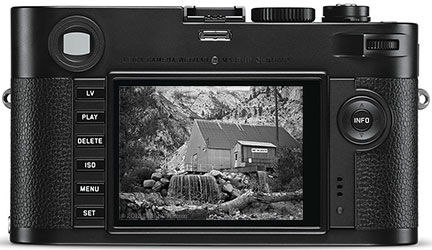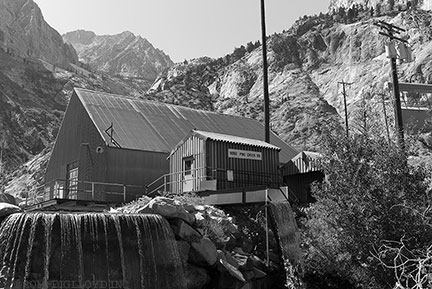Leica 24-Megapixel Leica M Monochrom Typ 246 Starts Shipping
Get Leica M Monochrom Typ 246 at B&H Photo.
See my review of the original 18-megapixel Leica M Monochrom in Guide to Leica.
I’ll be testing the new 24-megapixel Leica M Monochrom Typ 246 as soon as I can, but I am as yet unsure when I might be able to get hold of one. B&H says expected availability is mid-May, so perhaps that will hold true.
When Leica went from the 18-megapixel M9 with its CCD sensor to the 24-megapixel Leica M240 with its CMOS sensor, the natural question was how long it would take to deliver a 24-megapixel monochrome version—about two years as it turns out (the M240 shipped around May 2013).
Megapixels are not really the gain (if indeed there is/will be any gain in resolution, barring some surprise)—the 24-megapixel M240 with its CMOS sensor never persuaded me that it actually delivered more resolution than the 18-megapixel CCD sensor in the M9.
The two features that I see as key are Live View and high ISO performance. High ISO noise performance is likely to be much improved from the CMOS sensor (CCD has always been terrible at higher ISO).
Live view
The big deal as I see it is the addition of Live View. Because filters from yellow to deep red are a exercise in frustration—like shooting in infrared as per rearward focus, particularly with red and deep red filters. A large shift, and very, very difficult to deal with on a camera with only a rangefinder. See Filters and Focus Error / Sharpness and even with the 50/2 APO this is an issue, see Focus Shift with Color Filters on M Monochrom.
But focusing errors with color filters are a non-issue with a Live View camera, since focusing Live View uses the actual image striking the sensor (vs a separate loosy-goosy mechanical rangefinder coupling, which I stopped using entirely once the M240 replaced my M9).

Feature overview
- 24MP Full-Frame B&W CMOS Sensor
- No Color Array or Low Pass Filter
- Leica Maestro Image Processor
- Rangefinder with Image Field Selector
- 0.68x Optical Viewfinder Magnification
- 3.0" 921.6k-Dot LCD with Sapphire Glass
- Full HD 1080p Video at 24/25 fps
- ISO 320-25000, 3 fps with 2GB Buffer
- Magnesium Alloy Body Construction
- Adobe Photoshop Lightroom Download

Image from the Leica M Monochrom (original 18MP version)
Description
It’s a shame that Leica can’t simply move forward, eliminate the rangefinder and put a high-res built-in EVF into a new camera, here in mid 2015. Or at least deliver a decent optional EVF instead of the crummy low-res one. Oh well.
Consistent with Leica's passion for classic designs mixed with contemporary functionality, the M Monochrom (Typ 246) Digital Rangefinder Camera is a unique digital camera dedicated to producing black and white imagery.
Lacking a color filter array, as well as an optical low pass filter, the M Monochrom's full-frame 24MP CMOS sensor records solely in luminance values, forgoing the need for color interpolation, in order to gain the utmost in sharpness, clarity, and resolution.
Complementing the imaging capabilities, the Leica Maestro image processor also affords a sensitivity range from ISO 320-25000 as well as a 3 fps shooting rate with a 2GB buffer for recording up to 30 frames in a sequence.
Full HD 1080p video recording is also possible in either 24 or 25 fps frame rates. Unique among digital cameras, the Typ 246 maintains Leica's preference for a rangefinder design and incorporates a 0.68x optical viewfinder with split and superimposed manual focusing, automatic parallax correction, and manual image field selection. Conversely, the camera also features a 3.0" 921.6k-dot LCD with sapphire glass covering to maintain the overall durability of the magnesium alloy and brass body.
As with past M-series cameras, the M Monochrom retains the ability to utilize the vast network of M-mount lenses from 16mm to 135mm. When working in live view, and since focusing operation is entirely manual, focus peaking and 10x live view zoom can be utilized to ensure critical focus. An ergonomic body design places all of the necessary camera controls within reach during shooting, including top shutter speed and drive mode dials, as well as rear menu navigation buttons and selection dial located atop the thumb rest.
Monochrom
Distinct from most digital camera, the M Monochrom (Typ 246) is a high-resolution camera dedicated solely to recording black and white imagery. By omitting a color filter array, as well as an optical low pass filter, this camera records imagery only in luminance values in order to gain higher sharpness, as well as increased clarity, depth, and resolution. Additionally, this design also contributes to reduce noise values when shooting at higher sensitivities, up to ISO 25000.
24 MP CMOS Sensor and Maestro Processor
Featuring a full-frame 24 MP B&W CMOS sensor and Maestro processor, this camera is also characterized by its improved shooting speed and versatility. A continuous shooting rate of 3 fps is possible and a 2GB buffer permits recording up to 30 DNG and/or JPEG files in a sequence with instant review possible.
The sensor and processor combination also affords full HD 1080p video recording, in either 24 or 25 fps frame rates. An on-board monaural microphone can be used for audio recording, in auto, manual, or "Concert" modulation settings, or an optional external stereo microphone can be used when paired with a microphone adapter set.
Optical Viewfinder and Rangefinder
The optical viewfinder is a large, bright-line 0.68x-magnification rangefinder with automatic parallax compensation and LED-illuminated frame lines, which are set to match the image sensor size at a focusing distance of 6.6'. On the front of the camera, a viewfinder frame selector can also be used to manually change the apparent image field to help visualize the scene with varying focal lengths.
The rangefinder mechanism displays split or superimposed bright field images within the center of the viewfinder to benefit accurate manual focusing control. The effective rangefinder metering basis is 47.1mm (mechanical metering basis 69.25 mm x viewfinder magnification of 0.68x).
3.0" LCD Monitor and Sapphire Crystal Cover
Complementing the optical viewfinder is a 3.0" 921.6k-dot LCD monitor, which is fitted with a scratch-resistant protective cover made from sapphire crystal glass for added durability. In addition to image review and menu navigation, this monitor also permits live view monitoring with the ability to utilize focus peaking and 10x zoom features to better ensure critical sharpness. Focus peaking highlights bright edges of contrast when they are in sharp focus, while the zoom control allows you to home in on fine details within the scene.
Body Design
Reminiscent of classic Leica designs, the M Monochrom features a black chrome-plated metal body design with a magnesium-alloy chassis, brass top and bottom plates, and a synthetic leather wrap. This minimalist and discreet appearance is further maintained by the unobtrusive Leica engraving on the rear of the body, with no front-facing or top plate logos.
Furthermore, the pared-down, ergonomic design allows direct access to necessary camera controls, including top shutter speed and drive mode dials and rear menu navigation controls.
Other Camera Features
- Designed to accept all M-mount lenses, Leica R-mount lenses are also compatible through the use of an optional R to M adapter.
- A download version of Adobe Lightroom is made available after purchase, and is ideally suited to processing of the M Monochrom's DNG RAW image files.
- An electronic level display can be used to ensure consistently level horizons and plumb verticals.
- After a JPEG is recorded, in-camera toning effects can be applied to imagery to simulate the look of film-based black and white processes.
- Language support: German, English, French, Spanish, Italian, Japanese, traditional Chinese, simplified Chinese, Russian, and Korean.






























